Hedgerow is essentially woodland edge habitat, without the wood. The combination of woody structure and more open conditions provides many nesting, roosting and feedingopportunities for wildlife.
Hedges can also act as wildlife corridors between isolated patches of woodland and scrub. However, their linear nature means they have a lot of edge, and land management practices adjacent to hedgerows have a disproportionately strong influence. Many hedges are affected by agricultural spray-drift (leading to loss of species through nutrient enrichment and damage from pesticides) in addition tounsympathetic management.
Read more about conservation:
- Can we save the insects?
- Zoology in 30 seconds: conservation and extinction
- Pet cats have 'up to 10 times larger impact on wildlife than wild predators'
Traditional management involves hedge-laying (bendingpartially cut stems over at an angle and weaving them between stakes to provide a stock-proof barrier), which is repeated when the hedge becomes gappy at the base or stems are 5-10cm in diameter and 2·5-5m in height. This rejuvenates the hedge, retains deadwood (oft en kept to provide initial protection from livestock) and allows it to grow tall over a broad, thick base.
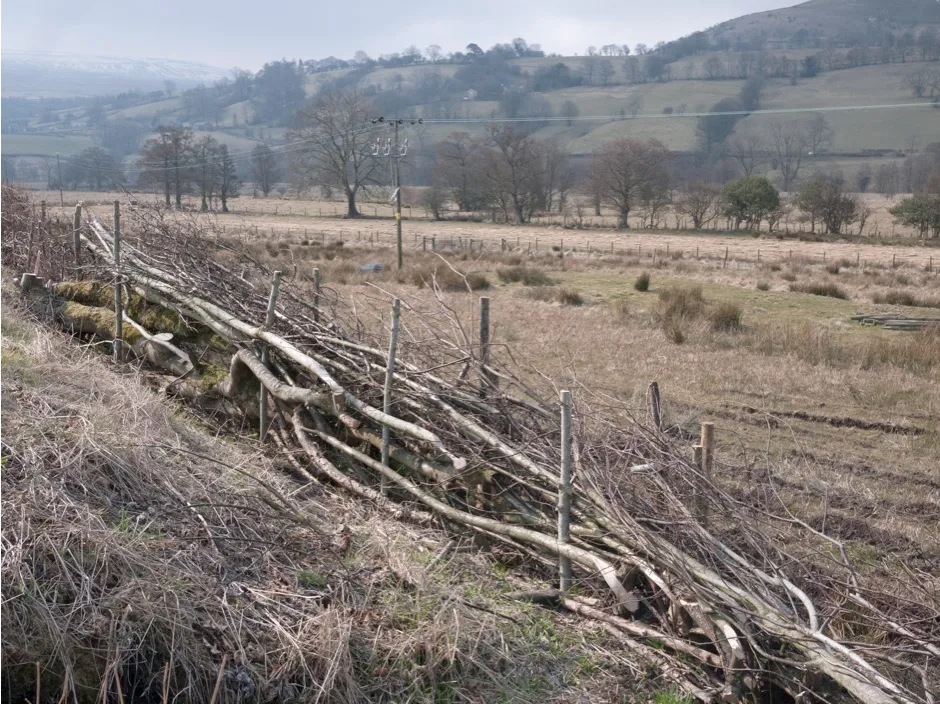
Hedge-laying is labour-intensive and has largely been abandoned in favour of annual mechanized trimming, which creates more homogenous hedges with limited structural variation. Repeated severe cutting can also cause hedges to die back.
Ancient hedgerows are often the most species-rich, and the presence of certain plant species can be used to identify older hedges, particularly Field Maple (in the UK), Dogwood, Hazel and Spindle, which are relatively poor colonizers and are rarely planted. Ancient hedges also often include giant coppice stools or old pollarded trees.
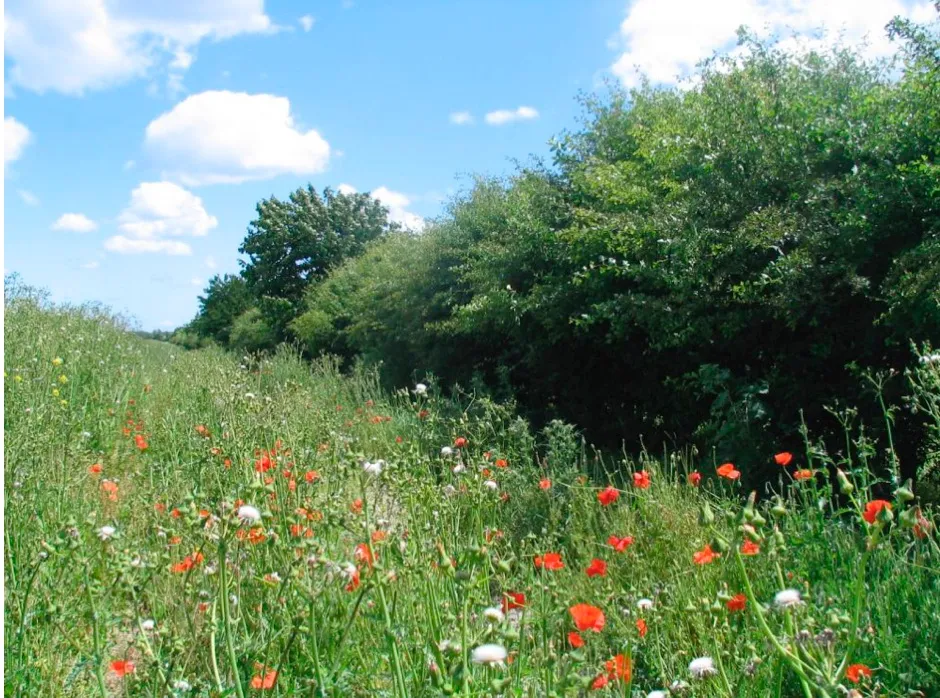
Similar habitats
Hedgerows include similar species to woodland edges and scrub, but are linear features subject to regular cutting or laying. Unmanaged hedgerows can develop into shaws (thin strips of woodland found on field boundaries, often adjacent to a road), although shaws may also be woodland remnants.
Origins and development
Many hedgerows were planted but some have more natural origins as relics of woodland that has long since disappeared. Some West Country hedge-banks date from the Bronze Age and many hedges are medieval, planted to mark ownership boundaries, retain livestock and provide shelter.
Some of these hedges have a distinctive ‘S’-shape, a result of the need for space where a plough could be turned. During the enclosure of common land in the 18th and 19th centuries, an estimated 200,000 miles of hedge were planted in England, particularly in the Midlands. These are often dominated by Hawthorn and tend to be straight, sometimes cutting throughother landscape features.
After the 1950s, the fortunes of hedgerows declined as agricultural intensification resulted in tens of thousands of miles of hedgerows being removed, damaged by brutal trimming and spray-drift or simply neglected.
Conservation
Much attention has been focused on how best to manage hedgerows for wildlife. Left unmanaged, they turn into lines of trees and lose the structure and variety that is so important. However, tight annual trimming is damaging, and can result in patchy hedges with little body.
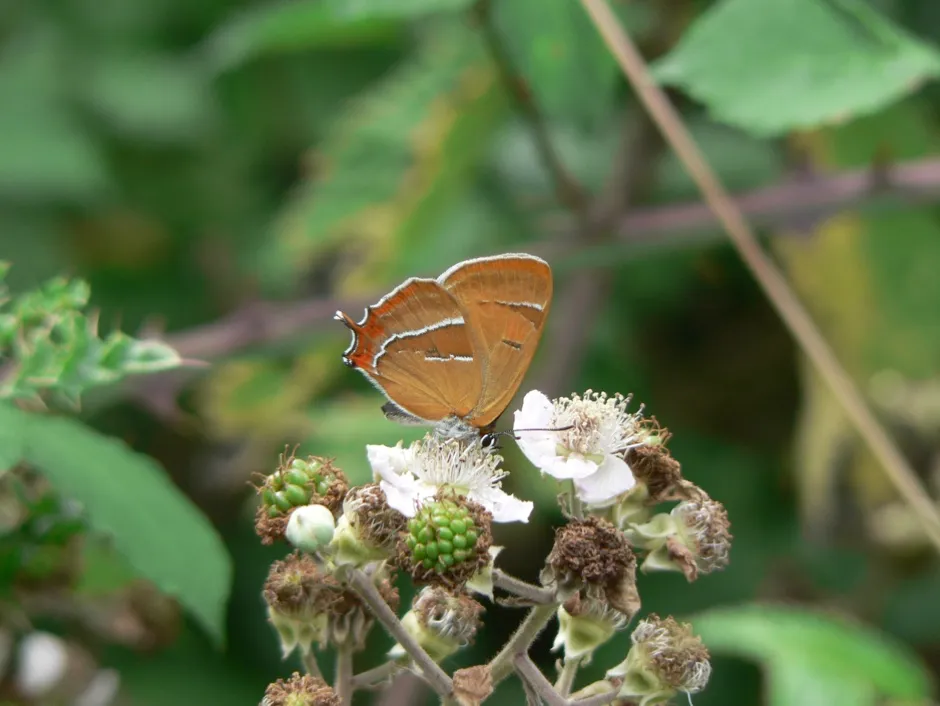
Periodic hedge-laying or coppicing is considered best, followed by some trimming to encourage a dense structure to develop before the hedge is allowed togrow up ready for laying or coppicing again. Late winter is the best time to manage hedges, so that berries are retained for as long as possible throughout the winter but the bird nesting season is avoided.
Encouraging sensitive harvesting for woodfuel, and increasing the awareness of the role that hedges play in reducing soil erosion and water run-off, could help protect the habitat.
What to look for
Hedges that are good for wildlife provide nesting sites, song posts, roosting sites, foraging habitat and corridors for movement. Some 600 plant, 1,500 insect, 65 bird and 20 mammal species have been recorded in hedgerows.
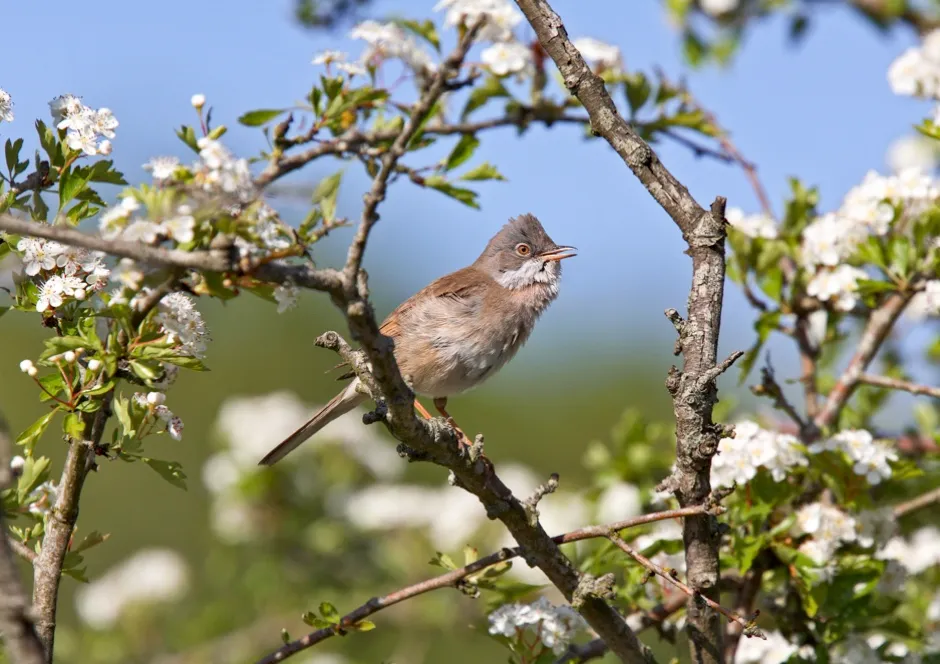
In addition to the suite of ancient hedgerow shrubs, keep a look out for veteran trees (including Black-poplar), Plymouth Pear (restricted to a few hedgerows in the south-west) and the endemic Devon Whitebeam (which is found in south-east Ireland as well as in Devon).
An endemic herb, Purple Ramping-fumitory, is particularly associated with hedge-banks. Hedgerows are good places to look for invertebrates. Bramble, Honeysuckle and thorn blossom provide nectar and pollen for a range of insects, some of which depend on Ivy flowers in autumn.
Read more about invertebrates:
- Scientists discover what makes blood so tasty to mosquitoes
- How many UK spiders are actually dangerous?
- Pesticides cause 'permanent and irreversible damage' to baby bee brains
Many beetle species can occur in the litter and tussocky vegetation at the base of hedges, including Stag Beetle, while hedgerow ditches adjacent to hedgerows are good for caddisflies. Bumblebees nest in hedgerows and use hedges as guides to their foraging sites. White-letter Hairstreak breeds on elm suckers, and also feeds on aphid honeydew on Field Maple.
Look for Small Tortoiseshell and Red Admiral butterflies around hedgerow nettles, and Orange-tip on Garlic Mustard. The Barberry Carpet moth is occasionally disturbed from its foodplant (Barberry) during the day.
How to recognise
Hedges are very variable, depending on local tradition and how they aremanaged. They are found lining green lanes, tracks and roads, encircling woods and dividing fields, and can be growing from earth or stone banks or along ditches. They may be tightlytrimmed, traditionally laid or tall and rambling.
The best hedges are tall and broad at the base and support woody species such as Field Maple, Hawthorn, Spindle, Wayfaring-tree, Wild Servicetree and Blackthorn intertwined with Honeysuckle and Bramble and occasionally overtopped by mature standard trees.
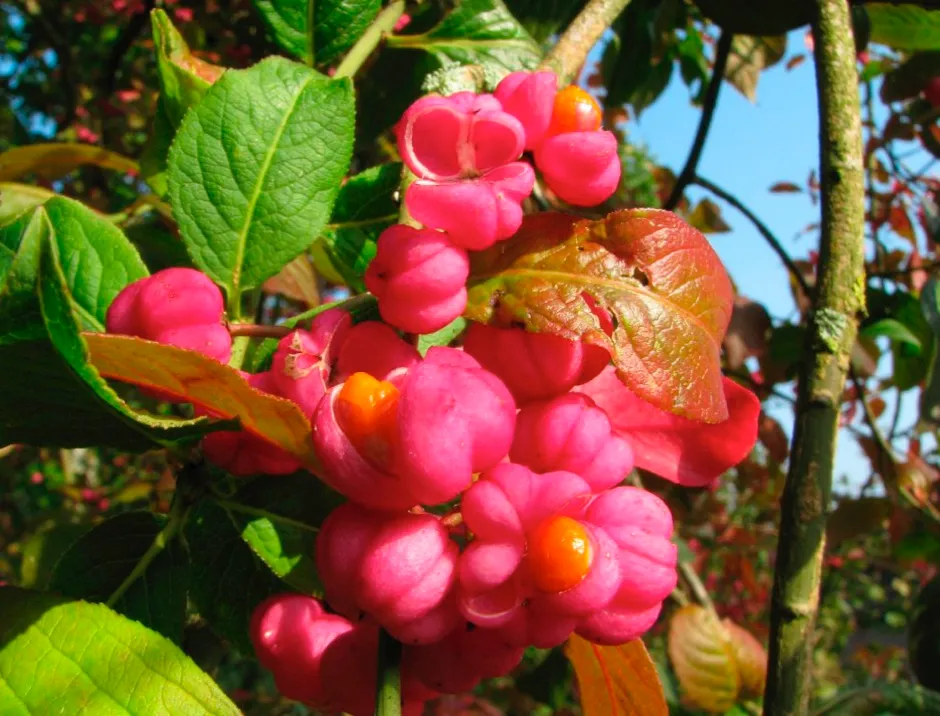
They can be thickly bordered with tall herbaceous vegetation, include wayside species such as Cow Parsley, Garlic Mustard and Hedge Woundwort, or may have a woodland flora of Bluebell, Primrose and Lesser Celandine.
Many stony hedge-banks are rich in lichens, bryophytes and ferns. Thick hedges can resound with birdsong in the spring, while in the summer they can be buzzing with insects. Even quite thin, over-trimmed strips of Hawthorn can supportWhitethroat and Dunnock.
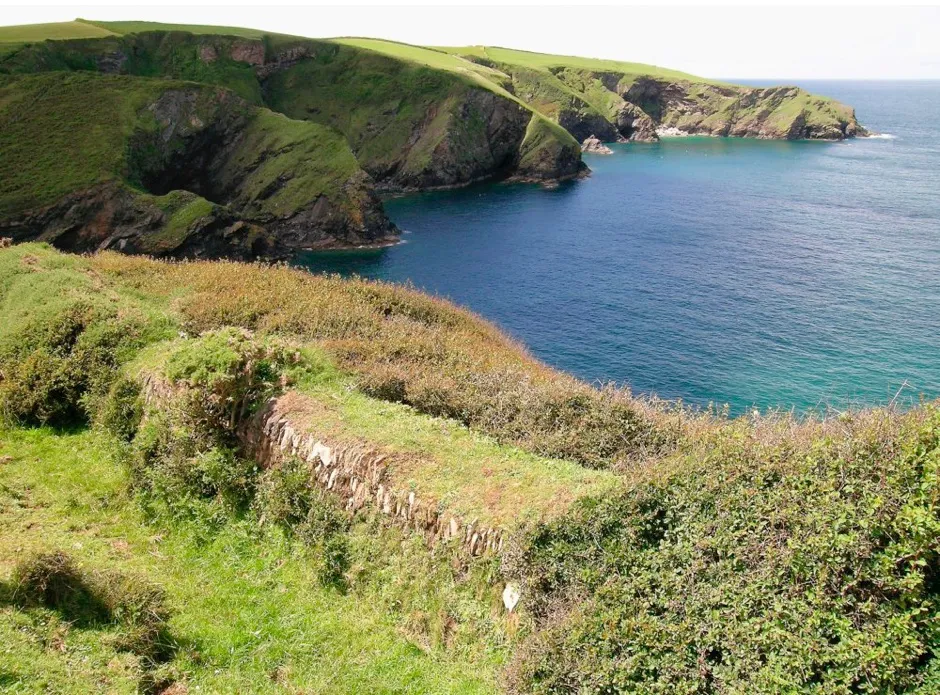
When to visit
Spring and summer for breeding birds and flowers; autumn for berries (for people and wildlife!); winter is a good time to look for Hazel Dormouse nests.
Did you know?
Hooper’s rule of thumb that the number of tree and shrub species in a 30-yard length of hedge equates to the age of the hedge in centuries is generally true in many areas. Most bird species prefer tall hedges with many trees, although Whitethroat, Linnet and Yellowhammer are also found in shorter hedges.

Uncommon species associated with hedges include Cirl Bunting, Turtle Dove and Tree Sparrow. Hazel Dormouse is famously found in hedges but Bank Vole is more common, and Harvest Mouse may also be seen.
At dusk look out for bats – Serotine follows hedges to foraging areas, and species such as Greater Horseshoe Bat and Natterer’s Bat glean insects from hedgerows.
Extracted from Britain's Habitats by Sophie Lake, Durwyn Liley, Robert Still and Andy Swash. Available now (£25, Princeton University Press).
- Buy now from Amazon or Waterstones